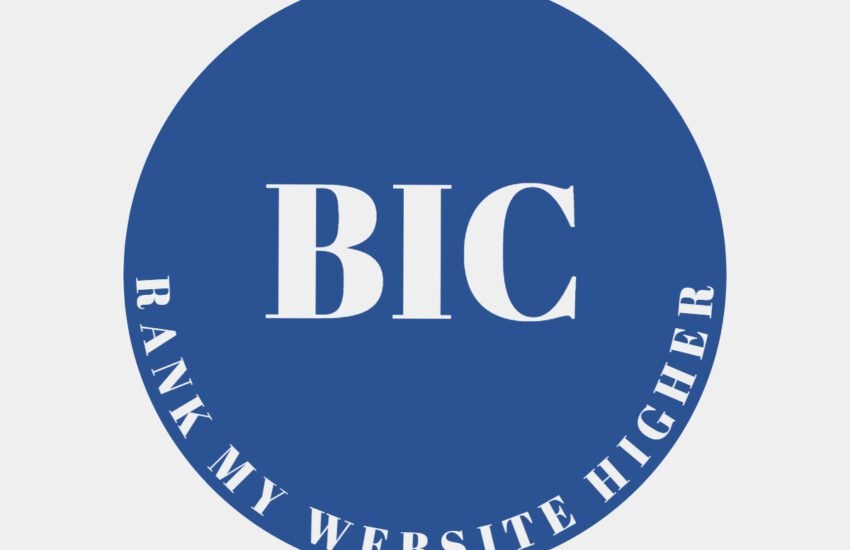How to Quickly Improve Internal and External Linking in Your Blog
Running a blog can be an exciting and fulfilling endeavor. However, sometimes we may overlook certain aspects that could be hindering our blog’s success.
In this article, we will explore some common issues regarding linking that may be affecting your blog without you realizing it, and provide tips on how to quickly improve the linking on your blog in 2024.
- Internal Linking
- External Linking
- Easy Ways to Improve Linking on Your Blog
- Submitting Pages in Google Search Console
- Time and Effort
- Conclusion
- Frequently Asked Questions
- 1. Why is improving internal and external linking important for a blog?
- 2. How can I quickly identify opportunities for internal linking within my blog content?
- 3. What are some best practices for internal linking within a blog?
- 4. How can I quickly identify authoritative external websites for potential backlink opportunities?
- 5. What are some best practices for external linking in a blog?
- 6. How can I quickly implement internal and external linking improvements across my blog?
- 7. How can I measure the effectiveness of my internal and external linking efforts?
- 8. How can I optimize anchor text for internal and external links to improve SEO and user experience?
- 9. How can I encourage other websites to link to my blog content for external linking opportunities?
- 10. How can I stay updated on best practices and trends for internal and external linking in blogging?
Internal Linking
One of the most important aspects of a well-optimized blog is internal linking.
Internal links help search engines understand the structure and hierarchy of your website, while also providing a better user experience for your readers. If you have noticed that none of your pages are internally linked other than through navigation, it’s time to make a change.
To improve your internal linking, go back to each page of your blog and add at least 10 natural internal links within the body of the text.
These links should make sense within the context of the content and provide additional value to your readers. Avoid using automated programs that change every occurrence of a specific keyword to the same link, as this approach lacks effectiveness and can be detrimental to your blog’s credibility.
External Linking
While internal linking is crucial, don’t forget about the importance of external linking as well. External links to reputable sources can enhance the credibility and authority of your blog.
Including occasional external links within your articles can provide additional value to your readers and help search engines understand the relevance and context of your content.
When adding external links, ensure that they are relevant to the topic and provide valuable information to your readers. Avoid excessive linking or linking to low-quality websites, as this can negatively impact your blog’s reputation.
Easy Ways to Improve Linking on Your Blog
Improving linking on your blog can enhance user experience, boost SEO, and increase engagement. Here are some of the easiest ways to do so:
1. Internal Linking
Link relevant blog posts or pages within your own website. This not only keeps users engaged by providing additional content they might be interested in but also helps search engines crawl your site more effectively.
2. Use Descriptive Anchor Text
Instead of using generic phrases like “click here” or “read more,” use descriptive anchor text that tells users and search engines what they can expect when they click the link. For example, “Learn more about SEO techniques” or “Check out our latest article on content marketing.”
3. Link to High-Quality External Sources
When referencing external sources, link to reputable websites that provide additional value or context to your content. This not only enhances credibility but can also improve your SEO by showing search engines that your content is well-researched.
4. Update Old Content with New Links
Periodically go through your old blog posts and add new internal and external links where relevant. This keeps your content up-to-date and helps distribute link equity throughout your site.
5. Create Resource Pages
Compile lists of helpful resources or tools related to your blog’s niche and link to them from relevant blog posts. This provides value to your readers and encourages them to explore more of your content.
6. Utilize Sidebar and Footer Links
Incorporate links to popular or important pages in your blog’s sidebar or footer. This ensures that they are easily accessible from every page on your site.
7. Link from Social Media and Email
Whenever you share your blog posts on social media or in email newsletters, include links back to your blog. This drives traffic and helps to increase the visibility of your content.
8. Optimize for Mobile
Make sure that your links are easily clickable on mobile devices by providing enough space around them and using a legible font size.
9. Track Performance
Use tools like Google Analytics to track the performance of your links. This can help you identify which types of links are most effective and optimize your linking strategy accordingly.
10. Encourage User Participation
Encourage user comments and contributions on your blog posts, and link to relevant user-generated content where appropriate. This not only fosters a sense of community but also provides additional valuable resources for your readers.
By implementing these strategies, you can enhance the linking on your blog and improve user engagement, SEO, and overall site performance.
Submitting Pages in Google Search Console
After making changes to your internal and external linking, it’s important to resubmit your pages in Google Search Console (GSC). This allows Google to re-crawl and re-index your updated content, ensuring that it is accurately reflected in search results.
When submitting your pages in GSC, pay attention to the guidelines provided by Google and follow best practices for optimizing your website. This includes ensuring that your pages have unique and descriptive meta titles and descriptions, using relevant keywords in your content, and providing a seamless user experience.
Time and Effort
Improving the linking on your blog requires time and effort. It’s important to approach this task with patience and dedication. Take the time to review each page, identify opportunities for internal and external linking, and make the necessary changes.
Remember that the goal is to provide value to your readers and enhance the overall user experience. By incorporating natural and relevant internal and external links, you can improve the credibility and visibility of your blog.
Conclusion
If you have noticed issues with your blog’s linking, it’s time to take action. Start by internally linking every single page with at least 10 natural internal links within the body of the text. Additionally, incorporate occasional external links to reputable sources. After making these changes, resubmit your pages in Google Search Console and monitor the impact on your blog’s performance. With time and effort, you can quickly improve the linking on your blog in 2024.
Frequently Asked Questions
1. Why is improving internal and external linking important for a blog?
Improving internal and external linking is essential for a blog for several reasons. Internally, it helps to enhance website navigation, distribute link equity across pages, improve user engagement, and boost SEO rankings. Externally, it establishes credibility, provides additional resources for readers, encourages backlinks from other websites, and strengthens the authority of your blog in your niche. Overall, effective linking strategy contributes to a better user experience, higher search engine visibility, and increased traffic and conversions for your blog.
2. How can I quickly identify opportunities for internal linking within my blog content?
To quickly identify opportunities for internal linking within your blog content, follow these steps:
– Use a website crawler or SEO tool to generate a list of all pages on your blog.
– Conduct keyword research to identify relevant anchor text and target keywords for internal linking.
– Review your blog posts and identify key topics, themes, or concepts that can be linked to other related posts or pages.
– Look for instances of relevant keywords or phrases within your content that can serve as anchor text for internal links.
– Prioritize linking to high-priority pages, cornerstone content, or conversion-focused pages to maximize the impact of internal linking on SEO and user engagement.
3. What are some best practices for internal linking within a blog?
Some best practices for internal linking within a blog include:
– Use descriptive anchor text that accurately reflects the topic or content of the linked page.
– Link contextually within the body of your content, rather than using generic anchor text or footnotes.
– Avoid over-optimization and excessive linking, which can appear spammy and detract from the user experience.
– Include a variety of internal links to different pages and sections of your blog to provide a diverse and comprehensive user experience.
– Regularly audit and update internal links to ensure they remain relevant, functional, and aligned with your SEO strategy.
– Monitor internal link performance and engagement metrics to identify opportunities for optimization and improvement over time.
4. How can I quickly identify authoritative external websites for potential backlink opportunities?
To quickly identify authoritative external websites for potential backlink opportunities, use the following strategies:
– Conduct competitor analysis to identify websites that have linked to your competitors’ content.
– Use backlink analysis tools such as Ahrefs, Moz, or SEMrush to identify websites with high domain authority and relevant content.
– Look for industry directories, forums, or resource pages where you can submit your blog or content for inclusion.
– Leverage social media platforms, influencer networks, or online communities to connect with influencers or thought leaders in your niche who may be interested in sharing or linking to your content.
– Monitor trending topics, news articles, or publications related to your niche and reach out to journalists, bloggers, or reporters for potential collaboration or coverage.
5. What are some best practices for external linking in a blog?
Some best practices for external linking in a blog include:
– Link to authoritative and reputable websites that provide valuable and relevant information to your audience.
– Use descriptive anchor text that accurately describes the content or context of the external link.
– Verify the credibility and relevance of external sources before linking to them to avoid associating your blog with low-quality or spammy websites.
– Avoid excessive external linking, which can dilute the authority of your own content and may be viewed as manipulative by search engines.
– Follow proper attribution and citation guidelines when referencing or quoting external sources to respect copyright and intellectual property rights.
– Monitor external link performance and referral traffic to identify high-performing sources and optimize your linking strategy accordingly.
6. How can I quickly implement internal and external linking improvements across my blog?
To quickly implement internal and external linking improvements across your blog, consider the following strategies:
– Use WordPress plugins or SEO tools that offer automated internal linking suggestions and optimizations.
– Utilize templates or standardized formatting for internal and external links to streamline the linking process and maintain consistency.
– Create a linking strategy or playbook that outlines best practices, guidelines, and templates for internal and external linking.
– Delegate linking tasks to team members or virtual assistants to distribute workload and accelerate implementation.
– Prioritize high-impact pages or posts for internal linking improvements based on traffic, conversion rates, or SEO potential.
– Leverage content management systems (CMS) features such as categories, tags, and related posts widgets to facilitate internal linking and content discovery.
– Set aside dedicated time for regular link audits and optimizations to ensure continuous improvement and alignment with your blogging goals and objectives.
7. How can I measure the effectiveness of my internal and external linking efforts?
To measure the effectiveness of your internal and external linking efforts, track key performance indicators (KPIs) such as:
– Internal link click-through rates (CTR) and engagement metrics, such as time on page and pages per session.
– SEO metrics, including search engine rankings, organic traffic, and backlink profile growth.
– Referral traffic from external sources and the impact of external links on overall website traffic and conversions.
– User engagement and behavior metrics, such as bounce rate, session duration, and conversion rates attributed to linked pages or posts.
– Monitor changes in domain authority, page authority, and other SEO metrics over time to assess the impact of internal and external linking on your blog’s authority and visibility.
8. How can I optimize anchor text for internal and external links to improve SEO and user experience?
To optimize anchor text for internal and external links, follow these best practices:
– Use descriptive and relevant anchor text that accurately reflects the content or context of the linked page.
– Incorporate target keywords naturally within anchor text to reinforce relevance and improve SEO.
– Avoid generic or vague anchor text that provides little context or value to users and search engines.
– Use variation in anchor text to avoid over-optimization and create a diverse linking profile.
– Prioritize user experience by ensuring that anchor text is informative, actionable, and encourages clicks.
– Test different anchor text strategies and monitor performance metrics to identify optimal approaches for your blog’s audience and objectives.
9. How can I encourage other websites to link to my blog content for external linking opportunities?
To encourage other websites to link to your blog content for external linking opportunities, consider the following tactics:
– Create high-quality, valuable, and shareable content that addresses the needs, interests, and pain points of your target audience.
– Reach out to influencers, bloggers, journalists, and industry experts who may be interested in your content and willing to share or link to it.
– Participate in online communities, forums, or social media groups where your target audience congregates and share your content organically.
– Offer to guest post or contribute articles to relevant websites, blogs, or publications in your niche, including backlinks to your own blog content where appropriate.
– Create link-worthy assets such as infographics, videos, or interactive tools that attract attention and generate inbound links from other websites.
– Monitor brand mentions and unlinked references to your blog content and reach out to website owners or authors to request inclusion of backlinks.
10. How can I stay updated on best practices and trends for internal and external linking in blogging?
To stay updated on best practices and trends for internal and external linking in blogging, consider the following strategies:
– Follow industry blogs, forums, and communities dedicated to SEO, content marketing, and blogging for insights, tips, and case studies.
– Subscribe to reputable newsletters, podcasts, or webinars hosted by industry experts and thought leaders in digital marketing and SEO
– Attend conferences, workshops, or virtual events focused on SEO, content strategy, and digital marketing to network and learn from peers and professionals.
– Join online courses or certification programs on SEO, link building, and content optimization to deepen your knowledge and skills.
– Participate in online discussions, Q&A sessions, and social media chats to engage with experts, ask questions, and share experiences related to internal and external linking.
– Experiment with new strategies, tools, and techniques for internal and external linking and measure their impact on your blog’s performance and SEO outcomes.


